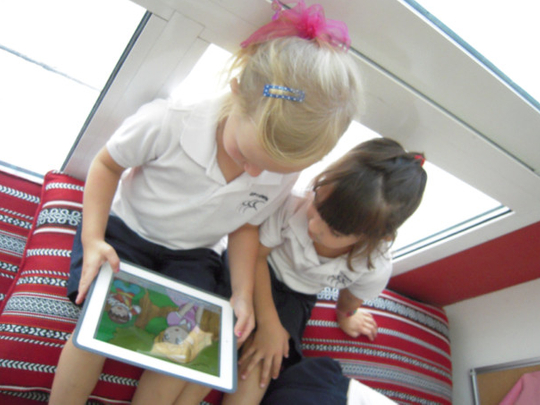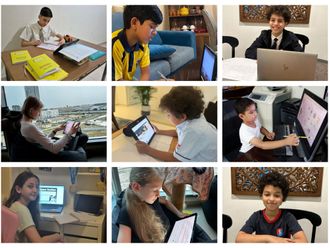
Technology is seeping into every aspect of our lives including education. To keep up with the times, schools around the UAE have been using this smart technology to benefit both pupils and teachers.
Emirates Transport’s (ET) new Smart Bus programme is one example. New systems installed in the buses include videos and sound bytes to monitor movement of buses and allow direct interaction with parents. “This system ensures foolproof safety of children who are the future of our country and implementation of such an advanced programme reflects on the importance the government gives to the issue of children’s safety,” said Humaid Mohammad Obaid Al Qutami, Minister of Education, at the launch of the programme.
Track your child
In its first phase a fleet of 3,200 buses transporting around 170,000 pupils from all public schools across the country have been equipped with advanced tracking systems. The smart tracking system, built in-house by a group of ET’s engineers, helps in route planning, alerts drivers and operators if the vehicle veers from the route and contacts parents a few minutes before the scheduled pick up or drop of their children.
In the second phase, the entire fleet will be equipped with CCTV cameras and live communications systems. Authorities are also planning to provide parents access to the GPS data through a website, which will give them real time information on bus movement.
Every student will also be issued a Radio Frequency Identification card, which will keep track of their movement in and out of the bus. The government is also realising the potential of implementing smart technology.
In 2012 the Mohammed Bin Rashid Smart Learning Initiative was launched. The Dh1 billion programme, which will be introduced in four stages spanning five years, is part of the UAE Vision 2021. In its first phase, 14 schools were introduced to Smart Classes where the Ministry of Education created 7,000 e-Content classes. This new curriculum will eventually be introduced to every public school in the country.
Other schools have also been integrating their own smart systems. At Dubai British School a number of smart initiatives have been introduced including laptops, tablets, interactive white boards, IT suites and remote communication with parents students and teachers. Taaleem’s Uptown School in Mirdif has a fully equipped Wi-Fi facility and all classrooms have interactive whiteboards and Macs. With wireless throughout the new campus, students and teachers have full access to laptops, iPads, and other devices.
Big challenges
“Smart technology is definitely a part of school future. Educational apps, school communicator systems, tablets/iPads would be the most important. Each school has taken a similar route but a different path depending on the type of school they are and their priorities for investment,” says Clive Pierrepont, Director of Communications, Taaleem.
“They’ve got to look at technology as something that parachutes the classroom. IT strategy should be delivered in the system, not something that’s for show. Technology needs to be interwoven with every other delivery method,” he adds.
According to Pierrepont the training that comes with introducing a new technology should be taken into consideration. “A lot of schools have invested in the technology but have not had the training to be able to use it to its full potential. It’s about smart budgeting — if you’re going to invest Dh1 million in a new IT initiative the mistake people make is that technology arrives before you are able to use it,” he says.
Cost is another issue that needs to be factored in for both parents and children. “The school provides the technology and students take care of it. You need a very clear set of guidelines on who takes responsibility for the technology. On the other hand there is also the cost. It’s not just the devices that are expensive but the software. Schools can buy licenses but with creative software you can’t afford to give everyone an Adobe Photoshop,” says Pierrepont.
Another challenge is upgrading all devices so they are able to teach in Arabic and English. As it stands, more Arabic content needs to be created to support the needs of schools following the curriculum provided by the Ministry of Education. However, as technology continues to develop, children stand to benefit from a more open globalised way of learning.
“Whilst the technology infrastructure, environment, content and devices still remain important for schools and organisations, the challenge that remains when introducing such an initiative across schools is the change in the culture and development of people. This should be aligned to the relentless focus and drive on improving learning and future pedagogies for students. And more specifically improving how digital learning is being evaluated for impact, particularly in the area of personalised learning,” says Stephen Cox, Deputy Chief Education Officer, Taaleem. ■













